Great Shop in a Two-Car Garage
Economy and ingenuity make the most of a modest space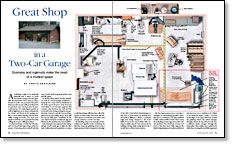
Synopsis: It takes time and experience to create a well-functioning, efficient shop. Curtis Erpelding shares how his sixth shop evolved and how it’s organized. Large drawings show the layout and workflow he’s developed, including what slides or rolls into position and into storage. Having smaller, lightweight machines is particularly advantageous; you can move them by yourself as your work or as ideas demand it. His tablesaw and assembly table are linked, at the heart of the shop. Erpelding used some savvy retrofitting and reuse: a cafeteria tray trolley holds parts; he built a grinding setup out of a washing machine motor and shopmade toolrest. The whole thing is mounted on drawer slides to be out of the way when not in use. This useful article will inspire some space-saving ideas for even experienced shop owners.
A workshop ought to be perfectly practical—just a place to work wood and to keep tools and materials dry and warm—but it never is. That’s because it is also very personal. The problems you solve as you outfit your shop may be practical ones, but they arise for personal reasons: You make jigsaw puzzles as well as highboys; your shop is unheated in the winter and floods in the spring; you like to stand while drawing and sit down while cutting dovetails; you store your kayak for half the year suspended from the ceiling above your milling machines.
I’ve had six shops over the last 20 years, and I’ve found that improving a shop is a matter of learning about myself and the way I work, both in general and in each specific space.
In my first shop, which was the cleared out end of a book-storage warehouse, I hung the few tools I had accumulated on the wall a good 10 paces away from my work table. It soon became apparent that constant trips between the wall and the work table were doing nothing for my productivity. I learned a specific lesson and applied it in my succeeding shops: Store drill bits by the drill press, saw blades by the saw, hand tools by the workbench, jigs and fixtures by the machines they were built for.
I also learned a more general rule of shop design: You’ll rarely get it right the first time. It takes time and experience to create a well-functioning, efficient shop. All of the aspects of shop order—from tool and machine layout to work flow procedures and storage solutions—evolve over time.
My grinding setup is an example of Darwinism as it applies in the workshop. In that first shop, my grinding device was a hand-operated wheel clamped to the edge of the table. It had all the disadvantages: It was slow, it took muscle, its minimal tool rest made it difficult to obtain a consistent edge and, being clamped to the work table, it was in the way. It didn’t take too long to realize that if I was serious about making a living while using hand tools, I would have to find a better system.
The first improvement was to motorize.
From Fine Woodworking #131
For the full article, download the PDF below:




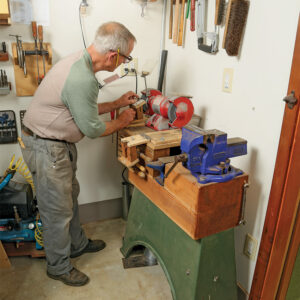
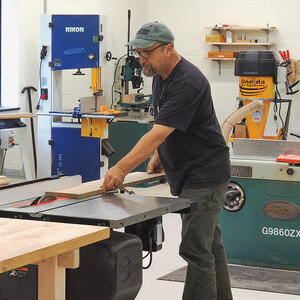






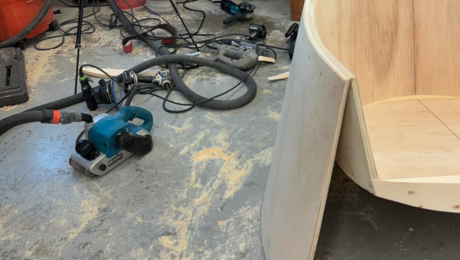
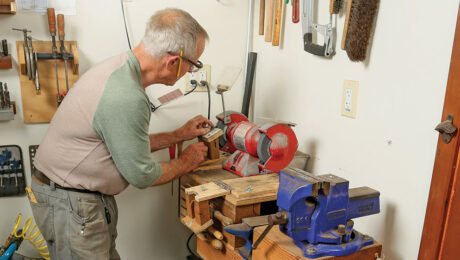








Log in or create an account to post a comment.
Sign up Log in